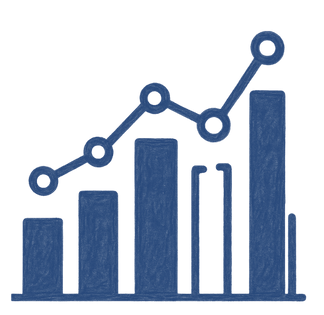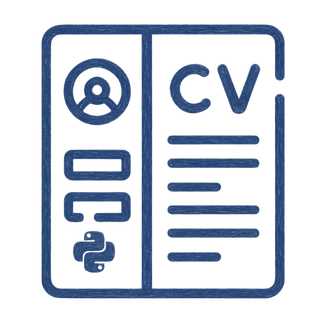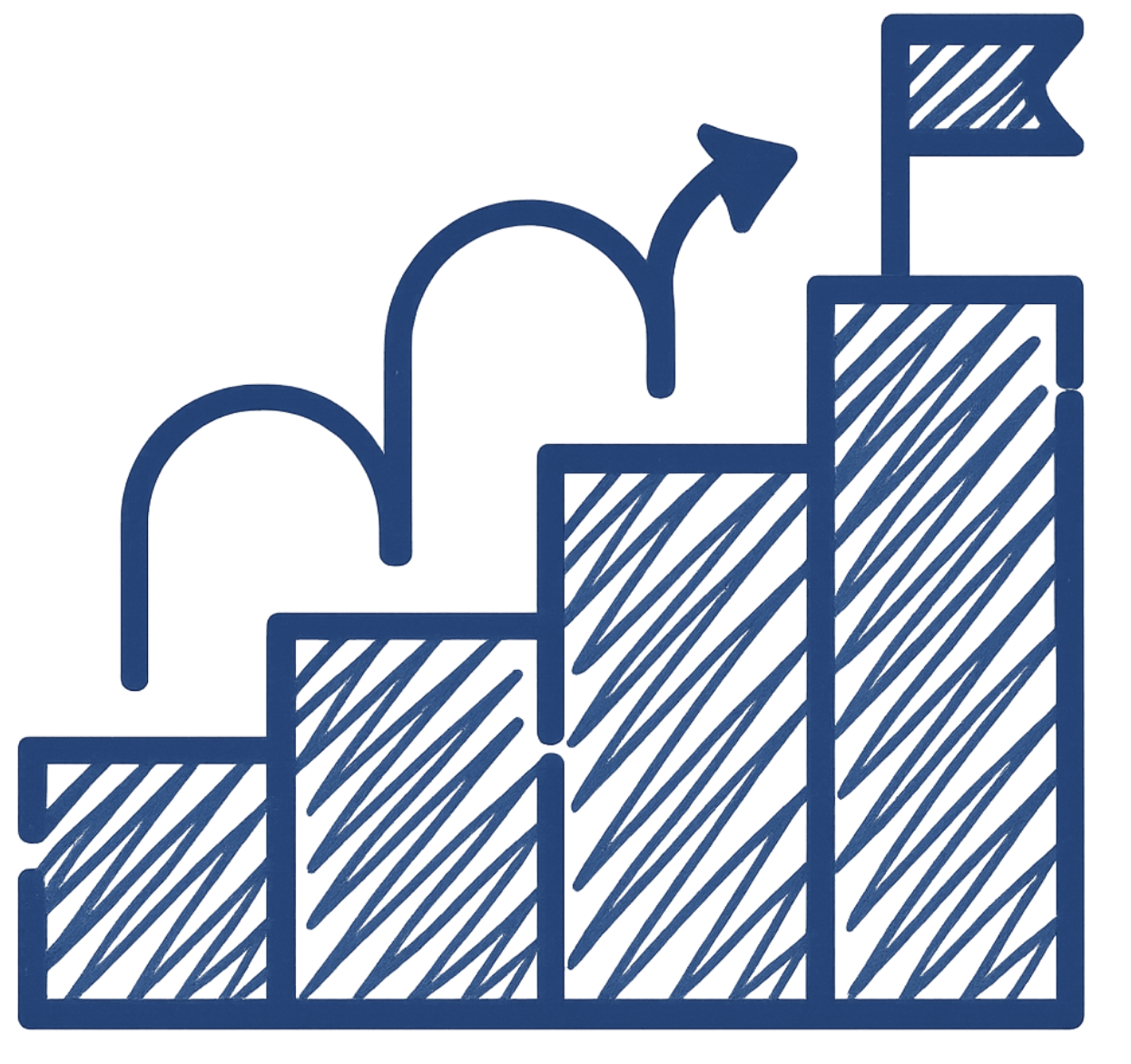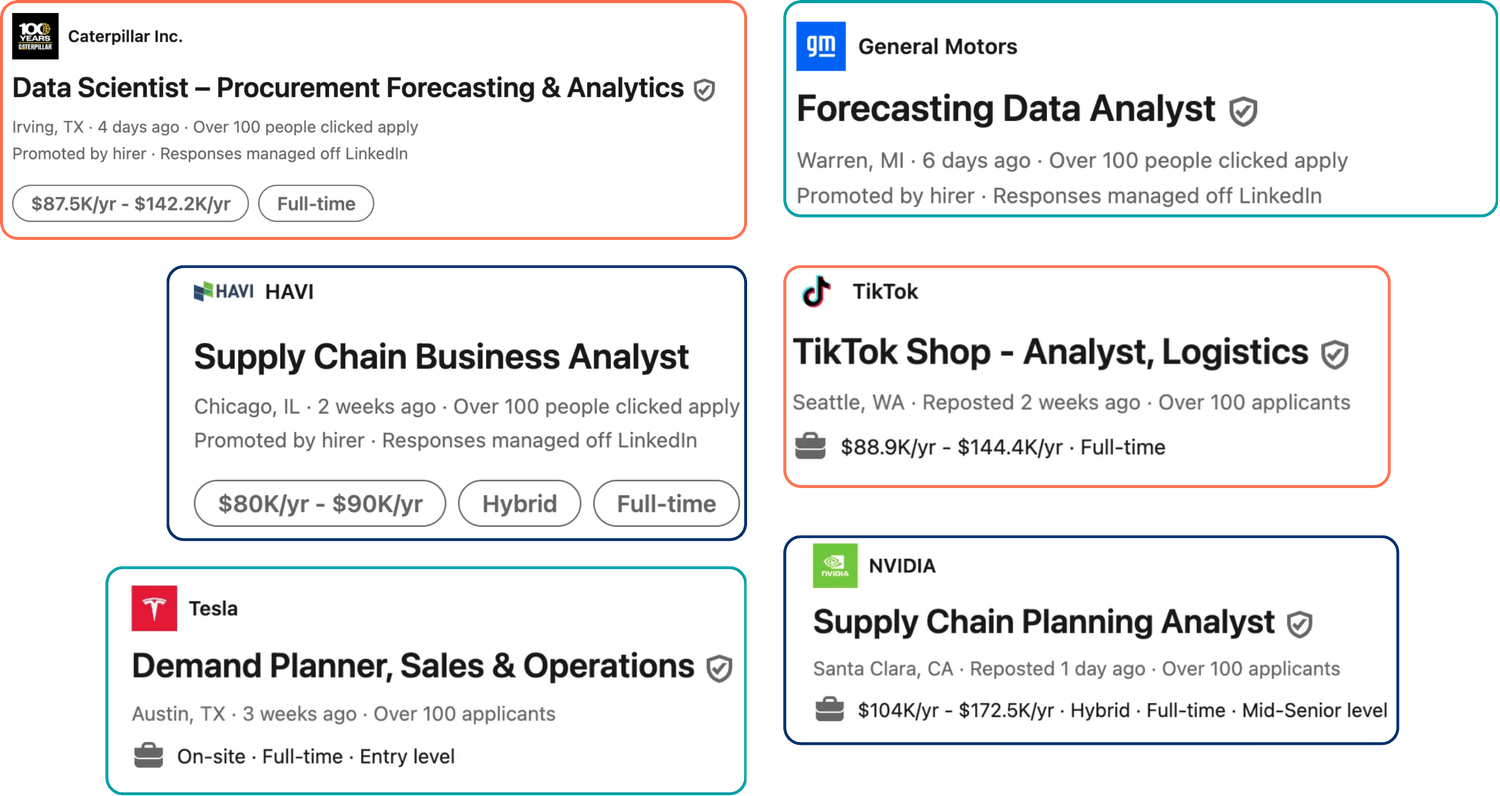
Master Supply Chain
Data Analytics
in 6 months
JOIN OUR FREE 60-MINUTE WEBINAR
Understand the full data-to-decision journey in supply chain.
See real examples of automation, forecasting, and optimization.
Learn how Python + AI can save you hours each week.
Discover how our program, Data Analytics for Supply Chain, can accelerate your career growth.
Competence → Proof → Confidence → Impact
Do you ever feel like...

You’d be more marketable for a job or promotion if you had stronger data analytics skills?

You spend hours stuck in Excel, bouncing between ChatGPT and the endless YouTube spiral, just to figure things out.

You’ve written SQL, Python, Power BI on your résumé… but secretly hope nobody asks you to prove it.

You’re still doing too many tasks manually and thinking: “There has to be a way to automate this and finally get my time back”

You’d feel more confident at work if you could consistently deliver data-driven decisions that actually move the needle.

You want to be recognized for your contributions and position yourself for better opportunities.
Now picture this…

Securing your dream job with data analytics skills that make you stand out.

Finally landing that raise or promotion you’ve been chasing for so long.

Saving hours of repetitive busywork every week, and gaining time for impactful projects and the life you love outside of work.
If any of this sounds familiar, this webinar will show you the tools and mindset that can help you get where you want to be — and become the professional every supply chain needs.
What You'll Learn in the Webinar
We’ll solve an inventory order problem with uncertain demand and lead times, taking you through the complete data-to-decision journey that transforms how supply chain professionals think, work, and become people of influence.
Here's what we'll cover
The framework used to build analytical models for solving real supply chain problems.
How messy data is organized and workflows are automated to save hours every week.
The process of turning raw data into dashboards and reports that highlight what truly matters.
How regression and forecasting methods are applied to understand and anticipate demand.
How simulations can test ideas safely before applying them in real operations.
A first look at optimization — designing smarter, more efficient supply chain solutions.
How prototypes and clear communication turn insights into action and measurable results.
By the end, you’ll clearly see the data-to-decision path for your challenges and how our program, Data Analytics for Supply Chain, helps you master each step.
Why shiny Data Analytics skills matter in Supply Chain
🌠 Employment of logisticians will grow 17% from 2024–2034, adding 26,400 jobs each year (U.S. Bureau of Labor Statistics, 2024).
🌠 Employers rank AI & Big Data (94%), Technological Literacy (77%), and Analytical Thinking (70%) as the top core skills for 2025 (World Economic Forum, Future of Jobs Report 2025).
🌠 Simulation–optimization frameworks reduce inventory by 10–35%, saving companies hundreds of millions (Jin et al. 2025).
🌠 89% of companies have increased analytics investment, but 52% struggle to find people with the skills to make it work (SupplyChainBrain, Feb 2025)
🌠 Data analytics skills are transferable beyond supply chain, to finance, healthcare, consulting, etc.
🌠 Average base salary for a U.S. Supply Chain Analyst in 2025 is $69,364, with mid-level roles reaching $89K–$136K and senior roles ranging $124K–$184K (Coursera, 2025).
🌠 The supply chain analytics market will grow from $11.1B in 2025 to $32.7B by 2032 (Fortune Business Insights, 2024).
🌠 90% of supply chain leaders say their company lacks sufficient digital talent to meet digitization goals (McKinsey Global Survey, Jan 2024).
🌠 Python is the language of AI and analytics. In 2025, 45.7% of recruiters list Python as the most in-demand language across industries (Statista/iTransition, 2025).
🌟🌟🌟
The skills you’ll see in this webinar are the same ones closing today’s biggest talent gaps in supply chain analytics.
🌟🌟🌟
Roles you’ll be ready for after this program

Data roles in supply chain are booming.
Now employers expect more than Excel. They want advanced data skills, and this program gives you the ones that make you shine.
SQL
Python
Dashboards (Power BI)
Report automation
Data storytelling
AI and Generative AI
Machine learning for forecasting
Statistical analysis and econometrics
Simulation and optimization methods
These are the skills that make you shine in today’s job market.
Hosted by
Stephania Kossman and
Luis Fernando Pérez
They are researchers and educators driven by one principle: science-backed learning that creates real change. Luis holds a PhD in Operations Research and Stephania in Mechanics of Materials. Together, they equip professionals to solve problems with clarity and precision.
Our Mission
We build confidence through competence. By training supply chain professionals in analytics and decision intelligence, we empower them to transform their lives, their work, and their careers, turning that growth into impact in the world.
Our Focus
Competence builds proof. Proof builds confidence. Confidence creates impact. This is the journey every learner takes with us.
How Learning With Us Works
Methodology → Learn by doing, using research-backed methods that drive real learning. Through supply chain case studies, simulations, AI tutors, and applied projects, theory becomes skills you can use on the job. We guide you step by step beyond the basics into Python, optimization, simulation, and machine learning so you can confidently solve complex problems.
Outcomes → Leave with a portfolio that proves you can solve real operations problems, a sharper mindset for tackling challenges, and the confidence of someone trained at a master’s level and ready for industry.
Support + Community → You won’t learn alone. Grow with motivated peers, get personalized feedback from experts, and benefit from close guidance on both your projects and your career steps.

Inside the Data Analytics for Supply Chain Program (SCAP)
Kick off with Python essentials: write code, work with NumPy arrays, Pandas dataframes, and build simple visuals with Matplotlib. Practice debugging with AI tools like ChatGPT, and connect SQL queries with Python to pull and manage data.
Work with data from SQL, Excel, and CSV files, clean it, and turn it into reports in Excel, Word, and PowerPoint. Analyze supply chain metrics like inventory turnover, stockouts, OTIF, demand variability, and customer/order trends. You’ll also apply text analytics with AI, practice data storytelling, and build dashboards in tools like Power BI and Streamlit to share insights.
Go beyond “what happened” to uncover why. Use correlation, regression, and causal inference to explain issues like stockouts, demand drops, and supplier performance. Apply machine learning methods like Random Forests, clustering, and anomaly detection to identify drivers of delays, cancellations, and bottlenecks.
Move from explaining the past to anticipating the future. Build regression and classification models to forecast demand, predict lead times, and assess supplier risk. Apply time-series forecasting with ARIMA, SARIMA, and tools like Prophet to tackle intermittent demand, evaluate forecast accuracy, and combine models for more reliable business decisions.
Test decisions before making them. Run Monte Carlo and discrete-event simulations in Python to model risks, bottlenecks, and “what-if” scenarios for inventory, logistics, and production. Work with probability distributions, Markov chains, and scenario planning (best, worst, likely cases), and explore digital twins to evaluate policies and prepare for disruptions.
Learn how to design and optimize supply chain networks and decisions with Python. You’ll work on problems like where to place facilities, how much to stock, how to balance production lines, and how to route deliveries — using both heuristics and optimization (LP, MILP, metaheuristics). The module also covers uncertainty (newsvendor, stochastic programming), multi-objective trade-offs, and decision tools like AHP, giving you a toolkit to balance cost, service, and resilience.
Presenting Results to Stakeholders and the CEO – Learn how to adapt your message so your insights influence decisions at every level.
Preparing for Promotions in Fast-Paced Companies – See what managers look for and how to position yourself for growth.
Mastering the Job Interview Process – Get practical strategies to stand out and present your skills with confidence.
Building a LinkedIn Profile and CV That Open Doors – Show your impact clearly and create opportunities for your next career move.

Frequently Asked Questions
A guided walk-through of real supply chain scenarios in automation, forecasting, simulation, and optimization — showing what’s possible with advanced data analytics skills.
Yes, but only for registered participants.
Professionals in supply chain, logistics, or operations who want to work smarter with data and advance their careers.
You might…
Want to solve complex problems but sometimes you feel that you don't have the knowledge and tools to do it.
Spend hours in Excel (cleaning sheets, pivot tables, VLOOKUPs).
Pull data from different systems and struggle to stitch it together.
Run SQL queries (or dabble with them).
Have tried Power BI or want to get started with dashboards.
Remember taking a Python class once… but not how to use it at work.
Want to take your next career step but need guidance to get there.
Want to use Gen AI beyond writing emails.
Aim for higher salaries in data-driven supply chain roles.
No. We guide you step by step, even if you’ve never used Python before. You’ll learn Python as a tool for analytics and optimization in supply chain — no heavy coding background required.
And we don’t stop at Python. We also show you how to use Gen AI to make your learning journey faster and easier.
The next cohort of Data Analytics for Supply Chain starts in November 2025 and runs for 6 months.
The program is designed for for working professionals.
Full details will be shared during the webinar.
If your work involves demand, inventory, forecasting, process optimization, or data-driven decisions, this program applies. Our tools and strategies adapt across industries and contexts.
The program investment is $2,999 USD.
✨ Good news: we offer a flexible payment plan to make it easier. Just reach out at hello@savilaeducation.com
679, avenue de la République, 59800 Lille, France
email: hello@savilaeducation.com